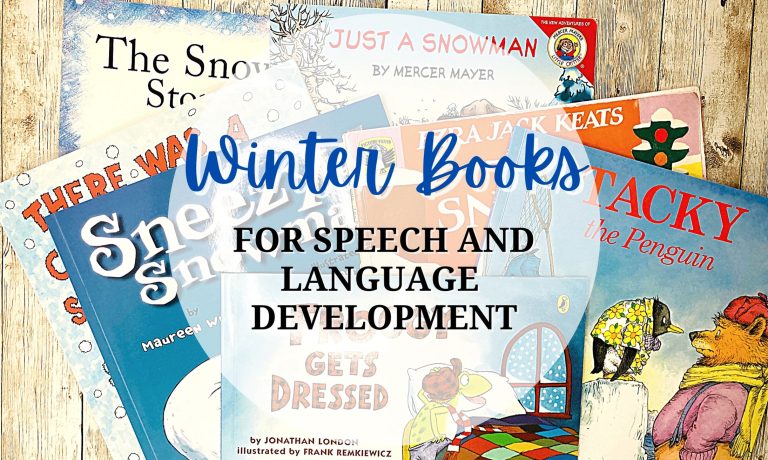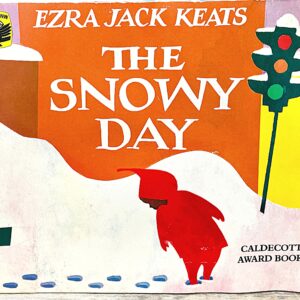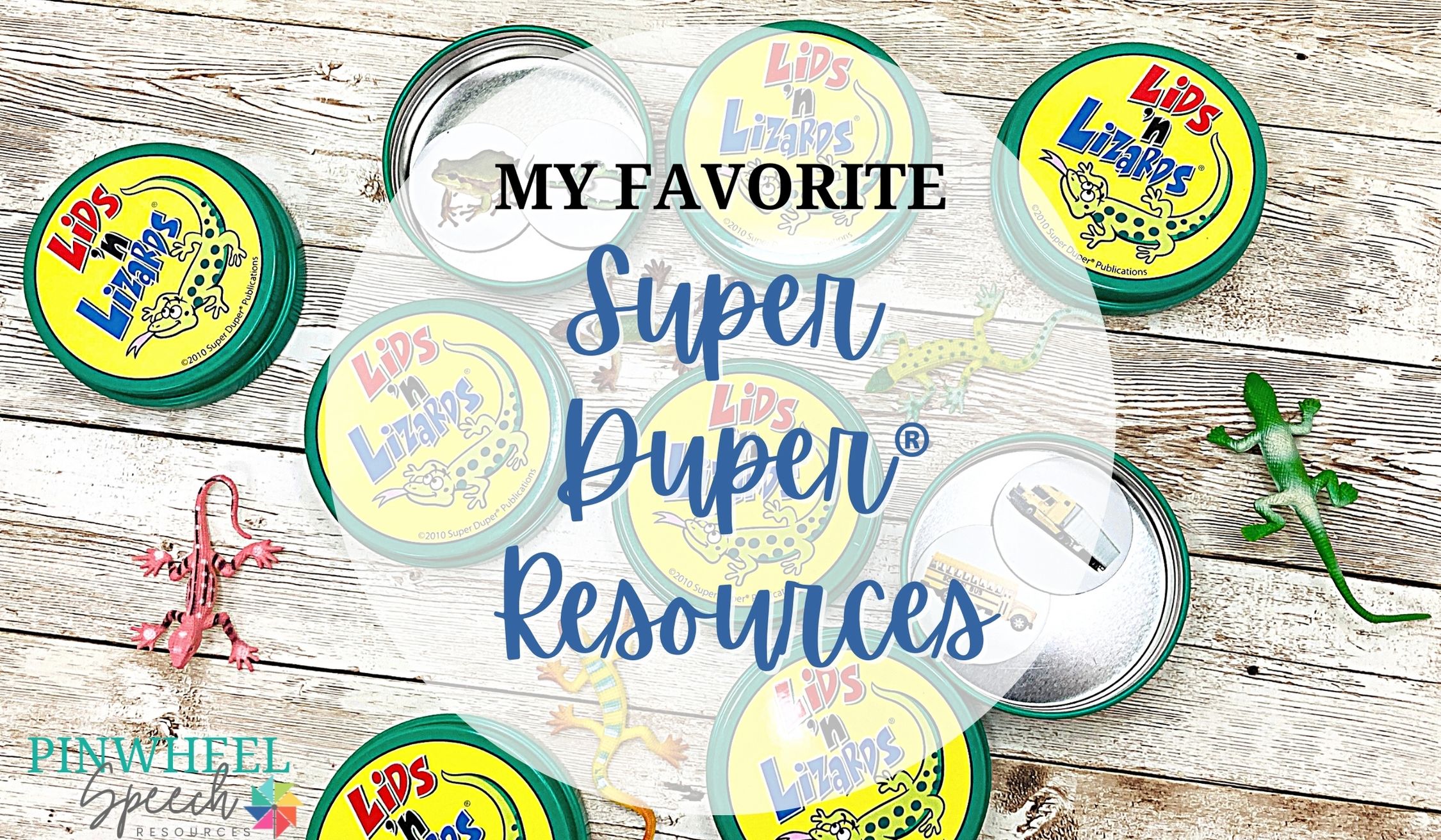In my opinion, there is nothing better than curling up with a good book and a hot drink on a cold winter day! There are so many wonderful children’s books that we can use during winter speech therapy sessions. Storybooks provide a captivating platform for speech therapy. You can target many speech and language goals with a good children’s book such as the following:
- Answering Questions
- Vocabulary
- Concepts
- Sequencing
- Narrative Language
- Articulation
- Making Predictions
- Making Inferences
- Problem Solving
- Perspective Taking
As an Amazon associate, I earn from qualifying purchases linked in this blog post.
1. Sneezy the Snowman
Sneezy the Snowman by Maureen Wright
Summary: Sneezy the snowman is COLD so he tries to warm up by drinking hot chocolate, sitting in a hot tub, and standing by a fire. Your students will laugh when the children keep rebuilding Sneezy and then he melts again and again when he tries to warm up. In my opinion, this is a great book for targeting /s/ blends, answering questions, sequencing/retell, predicting, inferencing, concepts (hot/cold), and problem solving.
Why we love it:
“My book choice is Sneezy the Snowman by Maureen Wright – It’s a good winter time book that can be prepped and ready for the return to school after Christmas break, when planning is not something you want to think about over break!!! Even the older kids like it 😉 — I am from Georgia, where we don’t get snow very often, but we sure like to talk and dream about it! A great snowman craftivity is great to pair with the book, then we display our work in the hallway. Anything with snowmen is a hit with my speechie friends! ;)” -Missy
“My favorite winter book is definitely Sneezy the Snowman. I love this book because there are so many different concepts to target (e.g., sequencing, wh- questions). I also love to use white puffy paint to create a melting Snowman craft. ” -Amanda
“For winter speech, I like to read Sneezy the Snowman. Mostly because it has a lot of /s/ blend targets for my phono students and most kids think the book is funny. And it is a relatively easy book to retell or sequence events.” -Charlene
“My favorite winter book is Sneezy the Snowman! I love making a “melted snowman” with the kids!” -Sara
“My favorite book to read during December and January is Sneezy the Snowman. My students really enjoy it! It’s my favorite book to read during this time of year because there are so many great hands-on activities that I can do with my students.” -Jenna
“I love using Sneezy the Snowman! It’s perfect for my s-blend friends and also language students!” -Harmony
“My favorite winter book is Sneezy The Snowman. It’s funny, has repetitive language and problem solving skills.” -Gail
“My favorite winter book is Sneezy the Snowman because I love the illustrations and the kids think it’s hilarious. You can also target many goals too!” -Maxine
“I love Sneezy the Snowman because you can target s-blends, action verbs, different verb tenses, wh-questions and hot/cold concepts!” -Sara
2. The Snowy Day
The Snowy Day by Ezra Jack Keats
Summary: In The Snowy Day, readers follow a little boy named Peter as he experiences the first snowfall of the season. This classic winter story is full of wonder and delight! It has a natural sequence and includes a number of common winter activities (building a snowman, snowball fight, making snow angels, etc). It is a great choice for practicing answering “Why” questions, problem solving and making inferences (e.g., “Where did the snowball go?”, “How did he make the third track in the snow?”). In addition, you can target basic vocabulary or higher level vocabulary (e.g., drag, firm, heaping).
Why we love it:
“I love The Snowy Day because I can target a lot of goals with it (artic, especially /s/blends, action, sequencing, wh- questions, etc). I also like the diversity of the character because many of the kids I see can see themselves in Peter.” -Angela
“My favorite winter book is The Snowy Day. I love it because it has story elements and winter vocabulary. It is easy to comprehend for my kindergarten and 1st grade speech kids. We then are able to do multiple activities with the story such as story sequencing, wh-questions, spatial concepts, and following directions.” -Yelena
“I love the book The Snowy Day by Ezra Jack Keats. It speaks to my 70’s baby heart with the sweet illustrations and story about being able to play outside with just your imagination all day. It’s advanced enough to go a little deeper with plot, sequencing, and vocabulary, but has a story structure that I can also share with my preschoolers and Life Skills class. A winner for sure!” -Kate
“The Snowy Day by Ezra Jack Keats is a classic. I love it for developing language for younger elementary children and the story is simple and fun! ” -Kimberly

3. The Mitten
The Mitten by Jan Brett
Summary: Forest animals discover a lost mitten in the snow and they all climb inside the mitten together. I think this book is perfect for targeting sequencing/retell, forest animal vocabulary, making predictions/inferences, and answering questions.
Why we love it:
“My favorite winter book is, “The Mitten,” by Jan Brett. There are so many things to say when you do tis book with an art project where the child puts all of the animals inside the mitten in order(memory, comprehension, etc.) There are also so many add on activities you can do with this!” -Marie
“I like The Mitten for sequencing and comprehension questions.” -Katelyn
“I love The Mitten for story sequencing and all the different animals, the kids love recreating it as well” -Kari
“My favorite children’s winter book is The Mitten because it elicits so much language (winter clothing, animals, losing something) and works on sequencing skills. “-Lauren
“I love The Mitten! That’s a great idea to pair the book with animal minis and act out the sequence. ” -Olivia
“I really like The Mitten by Jan Brett for vocabulary development, prediction, story retell and sequencing.” -Jennifer
“The Mitten by Jan Brett has been great for predictive text and engaging illustrations.” -Elana
“I love The Mitten because I have a lot of interactive items to use to make a sensory bin as well as worksheets for students to complete.” -Brittany
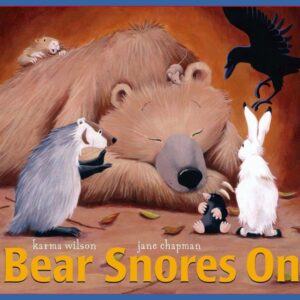
4. Bear Snores On
Bear Snores On by Karma Wilson and Jane Chapman
Summary: In this story, different forest animals visit the bear while he is hibernating in his cave. Bear Snores On is fun to read with rhyming verses and alliteration throughout the story. In addition, you can target basic forest animal vocabulary or higher level vocabulary (e.g,. lair, heap, damp, brew, grin, flutter, slumbering, blustery) with this book. It has a repetitive line (“But the bear snores on”). You can also practice /s/ blends (snores, sleeps, snow, sniffs, slurps, spark, stop, smell, storm, stew, snarls, snuck). Also, don’t miss the author’s related other winter books Bear Can’t Sleep and Bear Stays Up for Christmas.
Why we love it:
“I love Bear Snores On because it is so sweet and whimsical, and I love all the winter animals. While some of the vocabulary is more challenging, there is also simple parts that repeat themselves throughout the story that kids can say along with the reader. The pictures are fantastic as well. ” -Kira

5. Snowmen at Night
Snowmen at night by Caralyn Buehner
Summary: Have you ever wondered what snowmen do at night? This book captures your imagination and gets your students talking about the secret life of snowmen. Snowmen at night includes several common winter activities and actions that students can relate to (snowball fights, sledding, building a snowman). It is filled with tier 2 vocabulary words (e.g,. thrill, anxious, crooked, gather, fright). Finally, you can also point out the rhyming words and target phonological awareness.
Why we love it:
“My favorite winter book is Snowmen at Night because it is great for mixed groups. It can target s-blends for articulation students and for language students, it can target action verbs, different verb tenses, wh-questions and more. ” – Sara
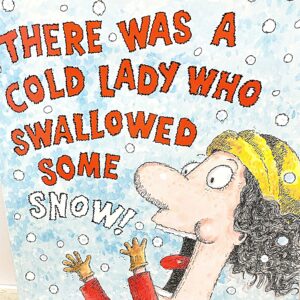
6. There Was An Old Lady Who Swallowed Some Snow
There was an Old Lady Who Swallowed Some Snow by Lucille Colandro
Summary: The old lady is at it again and this time she makes a snowman! This book is perfect for sequencing, reviewing clothing vocabulary, and making a prediction about what will come out of the old lady.
Why we love it:
“There Was An Old Lady Who Swallowed Some Snow is one of our favorites! My younger ones like to help me tell the story, then we do sequencing crafts. My older ones compare/contrast the story to other books in the series, like There Was an Old Lady Who Swallowed a Fly. My artic students rebuild the snowman in between artic trials.” -Brianna
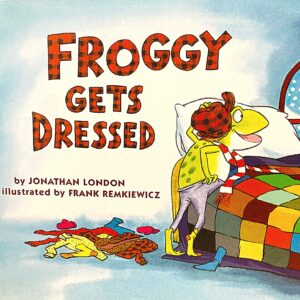
8. Froggy Gets Dressed
Froggy Gets Dressed by Jonathan London
Summary: In this hilarious story, a little frog is getting dressed for winter but he keeps forgetting to put on important articles of winter clothing.
Why I love it: This book covers winter clothing vocabulary and a variety of core words (put on, on, off, in, out). You can also practice answering questions (“What’s missing?”, “Why do we wear mittens?”), sequencing, and concepts (hot/cold).

9. Tacky the Penguin
Tacky the Penguin by Helen Lester
Summary: Tacky the Penguin is not like the others but his unique personality characteristics save the day. This sweet story is all about being yourself!
Why I love it: This book is perfect for comparing and contrasting characters because you can compare Tacky to the other penguins (same/different). In addition, it is a good book to practice character analysis and using character traits. Most importantly, it has a wonderful message of inclusion and celebrates our differences.

10. The Snowman
The Snowman by Raymond Briggs
Summary: Join a little boy as he builds a snowman and dreams about their adventures together. This wordless picture book speaks for itself.
Why I love it: I love wordless picture books because they can be used in so many ways during speech therapy sessions (e.g., eliciting spontaneous language, answering questions, vocabulary). This story is perfect for sequencing and retelling. You can also practice speech carryover and narrative language skills by having your students tell the story in their own words.

And many more!!!
My favorite winter book for my preschoolers is “Merry Christmas Big Hungry Bear“. -Trish
“I like Thomas’ Snowsuit by Robert Munsch for working on /s/, s-blends, story retell, inferencing, and problem solving.” -Jennifer
“The Gingerbread Man Loose in the School is my favorite because it’s great for all grades (k-5). It’s an episodic narrative and can also be used for social language groups – discussing feelings associated with getting lost, problem solving, perspective…So many opportunities for mixed groups!” -Haley
“I love Ten on the Sled because it’s predictable and the kids love placing pictures of the animals on a sled that I make. You could work on wh questions, positional concepts and descriptive language.” -Michele
“My favorite winter book for therapy is Winter Sleep by Sean Taylor. I modify it for younger kids and there is so much I can do with the book, I really love it!” -Tobie
“I love the Polar Express – mostly, a personal favorite at home and also at school. We pair it with a Hot Chocolate party each December.” -Megan
“My favorite winter children’s book is Little Blue Truck’s Christmas! The repetition is great for my students and I’ve found many ways to adapt it for my older students, as well.” -Nicole
“My favorite book to read in speech during the winter is Pete the Cat Saves Christmas. My kids all love Pete the Cat and I love that the stories are so interactive and descriptive!”-Ashley
“I like The Hat by Jan Brett for sequencing, making predictions, and requests for animals and clothes.” -Sandi
“My favorite winter story is Dora’s Chilly Day and I love making hot chocolate with the kids after reading it. It has ingredients in 3 steps and related winter vocabulary.” -Jessica
“I just checked out “The Three Little Mittens” by Linda Bailey from my public library and after reading it with my own kids am excited to use it in therapy also – a very sweet story about being unique, not having to do what everyone else is doing, and making new friends.” -Tanya
“The Jacket I Wear in the Snow is one of my faves! I love it for my pre-K mainly because of the repetition but also it’s great for winter vocab, sequencing—I’m able to use this for at least a couple of weeks with my groups!” -Ann
“I love “A Loud Winter’s Nap” because it’s such a fun book for sequencing. ” -Stacey
What are You Reading?
I’m always looking for more ideas and I would love to know YOUR favorite winter picture book! Please comment below! Also, if you are interested in joining the Pinwheel Speech Community, you can CLICK HERE.
